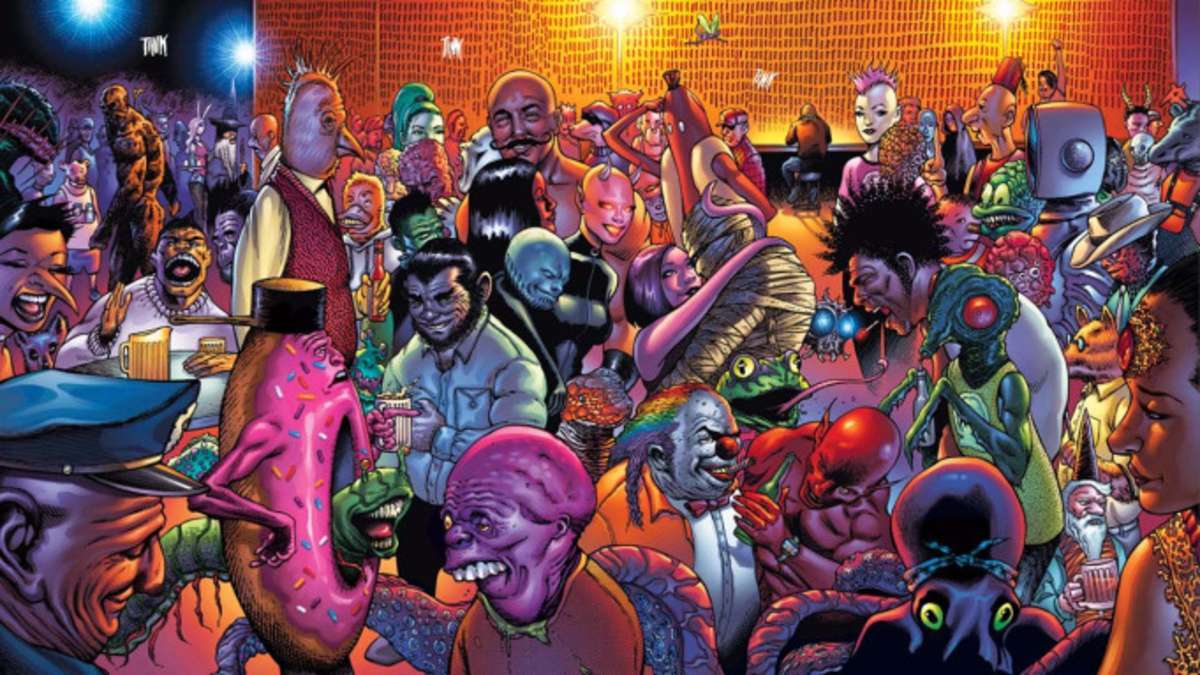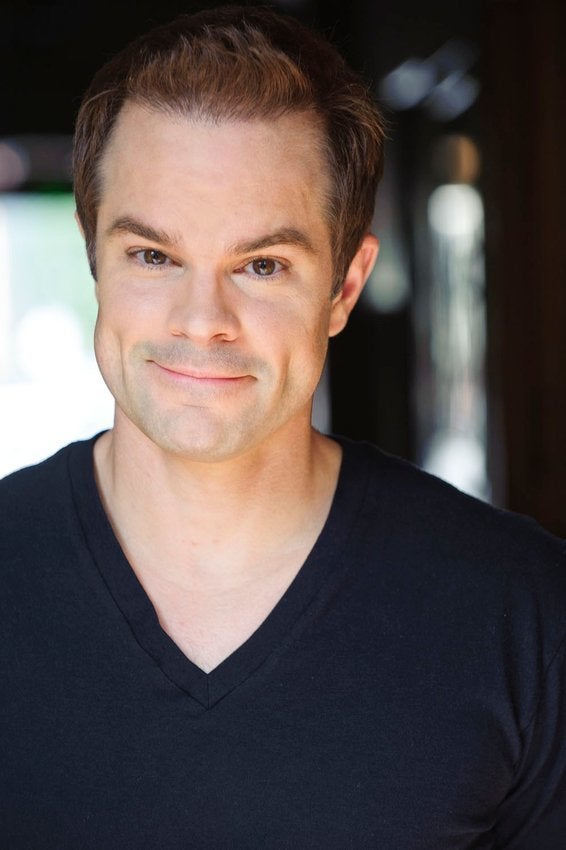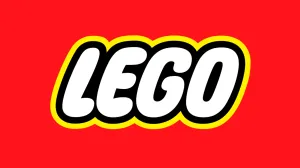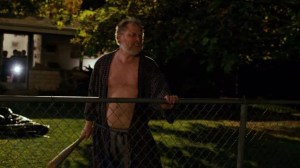The first 5 issues of Slow City Blues are set to debut on Zoop, a new comics publication platform next Monday, June 7th. In advance of the series’ debut, writer Samuel Haine and artist coordinator/inker John Livesay sat down with ComicBook.com to discuss the story, explain what Zoop offers comics creators and fans, and share some behind-the-scenes stories. Keep reading to discover all of the details on this exciting new comic book series and platform.
Videos by ComicBook.com
Slow City Blues follows Detective John Lorris, a police investigator trapped inside his own imagination after a failed suicide attempt. While stuck in Slow City, a construct of his mind’s eye filled with strange characters, John must keep order and battle his own demons to return to reality with his wife and son. Accompanied by his partner Moof, a six-foot tall, cynical skunk, John is racing to solve a double homicide and stop a gang war when readers meet him in Slow City Blues #1.
Check out the series’ trailer at the top of this article.
Samuel Haine comes from writing television and film to make his comics debut with Slow City Blues. He is joined by inker and artist coordinator John Livesay, a 28 year veteran of comics with published work at Marvel, DC, Image, IDW, and Valiant. Haine and Livesay are accompanied on Slow City Blues by penciler Shawn Moll, colorist David Baron, letterer Thomas Mauer, and story consultant Artisha Mann Cooper.
Zoop is a new comics publication platform offering readers a curated selection of series and creators a turn-key solution providing marketing, fulfillment, shipping, and after-campaign services.
When Slow City Blues debuts on Monday, interested readers can order the complete first five issues of the series from the Zoop landing page here.
Comic book reviews editor Chase Magnett sat down with Haine and Livesay to discuss their upcoming project and the process of working with Zoop. Check out their full conversation below…

COMICBOOK.COM: The first five issues of Slow City Blues arrive on Zoop this week, so Sam [Haine] could you tell us the origin story for what Slow City Blues is and where it came from?
SAMUEL HAINE: I’ll do the quick elevator pitch first: It’s an ongoing series about a detective who after a horrible accident becomes trapped inside his imagination and he has to clean up this city, which is actually an imaginary construct, if he wants to return to his wife and son in the real world. For this first five-issue story arc, it focuses on John Loris, the detective, and his partner Moof, a smart-ass, talking skunk, racing to solve a double homicide before a gang war breaks out and destroys Slow City.
COMICBOOK: So John [Livesay], how did you become involved with this imaginative noir? What first attracted you to the project?
JOHN LIVESAY: I met Sam through our mutual friend and producing partner, Mike Manning. Sam had an idea for a comic, which he brought to Mike and Mike said, “Well, I know one guy.” We got in touch with one another and had a number of talks; we hit it off and he sent me the story to read. I knew it was good, but it needed that second test. The train kept moving forward and we kept picking up more along the way like the penciler, the letterer, and the colorist—the rest of the team.
HAINE: Even before that, you’d spoken about the “origin story,” so to dive into that: I’m a huge fan of The Dresden Files, a big fan of Jim Butcher’s work. I have the whole series and all the ancillary offshoot stuff. I’m a big fan of Fables; Bigby Wolf is one of my favorite fictional characters. And I almost got a job at a video game company about ten years ago where they were doing the adaptation of those graphic novels. I didn’t get the job and responded by thinking, “Well I’ll show you all. I’ll do my own thing!”
One day my brain opened up and this very rough idea of Slow City Blues fell out. I was a waiter on food stamps just scraping by, so I saved up enough money to get the first handful of pages commissioned, then I went to Mike. He thought it was pretty wild and asked if I really wanted to do it. I did and he showed it to John who said, “Yeah, this is pretty good, but let me get confirmation.” So he brought it to Jim Shooter [former Marvel Comics’ editor-in-chief] who then read it and said, “This needs a lot of work, but it’s good. And you need a lot of work.”
It felt very much like that scene in Kill Bill, Vol. 2 where Bill drops off The Kid at Pai Mei to train. John essentially kicked me out of the car and said, “Good luck!” Jim is amazing and he’s such a fantastic mentor, but it was very much the “Shooter school of storytelling” and it was a school of hard knocks and also a masterclass where I got to learn, coming from a television and film background, how to write comics and be a better craftsman.
We fast forward a couple of years to when John has been trying to put the team together and we dive into production and now, a few years later, we get to hang out with you talking about the actual comic book. We finally crossed the finish line… or are about to!

COMICBOOK: I did want to ask about Jim Shooter having read Jason Sacks’ profile Jim Shooter: Conversations; he’s one of the most interesting characters in American comics. Could you tell me a bit more about his role in the project and how his mentorship influenced it?
HAINE: He was mostly my mentor. I came in very green as this is my first time writing a comic, so he acted as the hand-behind-the-hand as John was the artists’ coordinator. Shooter taught me about craft, what it meant to tell a clear, concise, impactful story in comics. He shepherded us along to where we needed to go. John refers to him as the “mama bird” where he made sure I could fly then pushed us out of the nest and said, “Flap your wings and make it work. Good luck.” All in a very Shooter style.
COMICBOOK: John, as someone who has been working in comics for many years, what made you see this story as a good fit for the comics medium?
LIVESAY: From a visual standpoint, as you’ve seen, there are so many different characters and backgrounds that it provides many ways to make the story visually appealing. We have only the one human and all of the rest are these very different characters and creatures. It was my role to ensure everyone had a distinctive look and role. There are so many pages I had to be sure there was something to enjoy on every page, whether you enjoy how emotion is rendered or meeting new characters.
I made sure it was all about consistency, too. Consistency, consistency, consistency. Once I figured out how that look and texture and linework are going to be for each character, I made sure it was consistent throughout the whole story. I use a dip quill and ink jar, and I knew which one was for Moof and which other one was used for each thing. I just wanted to be sure nothing would falter—readers shouldn’t get to issue three and find Moof’s hair is smooth and silky, when it has been coarse for the entire series. If people are putting down their hard earned money, I want to be sure every page is enjoyable to look at and read.
COMICBOOK: I was able to read the first five issues of Slow City Blues earlier this week and noticed it pushes back on some of the restrictions in standard print comics. There are many splash panels and pages because each issue’s page count is variable and several issues are longer than 30 pages. Did publishing with the Zoop platform allow you the freedom to go big and deliver some moments that may not have been as easily achieved with a standard publisher?
HAINE: That is my fault—not my doing, but my fault. Coming in and being so green, I swear to you, I would talk with Shawn [Moll] and coming from film, I took for granted the fluidity of motion. There’s the old Kirby mentality of “pick your most energetic and dynamic shots” that I had to learn.
Shawn would call me and point out I had characters doing the entire macarena in a single panel and explain that it takes at least 9 more pages. Then I’d call John and say, “I’m adding 9 pages” and he would tell me that I can’t. So I’d return to that Shooter school of storytelling where I make everything as clear and concise as possible, then I’d call John back up and say, “Not 9 pages, but 3 pages?” He would point out we have a budget and I’d figure out how to make it work with 2 more pages. You strip everything else away and focus on the heart of the matter.
Clarity is the key. Clarity, clarity, clarity, because if the story isn’t clear, then the reader won’t care. My job as the writer is to make the reader care.
I was lucky to have any additional runway to work with in stretching out ideas. I love the Brian K. Vaughan-style where he opens and closes with big splash pages. I also love what McFarlane does where he’ll hit you with big, double-page spreads. So I worked with John to make sure readers would get their money’s worth and we could also deliver these big moments of spectacle. That helped in not being beholden to 20 or 22 pages. However it needed to take place, we could do that so it made sense and each issue was a satisfying part of the whole narrative.
COMICBOOK: It is an expansive narrative; I could see that Dresden DNA you mentioned in the story with an abundance of characters and supernatural (or imaginary) threats. It’s a big story with a lot to see. John, I’m curious with all of the different characters and moods and settings you had to tackle in depicting Slow City Blues, is there a specific element you found yourself enjoying most or being particularly drawn to?
LIVESAY: Since the first issue is oversized, it took longer to complete. I didn’t start at the beginning; I think I started on page 12 because I was very invested in rendering the Flytrap Gang because they were very cool and I put a ton of effort into their body frames and their heads with those feelers. I wanted them to look different and provide fluidity to their body parts with all of the different textures and niches. When they’re stretching out their arms, it looks like everything is moving around them when they’re going. Almost like a plant, they keep growing. I was really into them.
I had to figure out how I was going to render Moof. I did the splash page where he first shows up sitting at the bar with that gigantic smirk on his face. I remember the exact day I did that because I’d brought some pages with me to work on while visiting my wife’s parents, which every artist knows is a mistake. I like how I work at home: the setting on my chair, the height of my desk, the light how I have it. Then I’m at a kitchen table with bad lighting hunched over, but when it hit me—how to draw Moof, that coarse texture—I had to keep going and going and going. I was up almost all night and my wife had to ask me about coming to bed at four in the morning.
That’s the thing, when I get that good flow, whether it’s midnight or three in the morning, I have to keep going; you can’t stop. I have the luxury of a good wrist and a really awesome quill, so I just keep going. Sam will call me asking about certain pages and I’ll tell him to wait, then he receives them and asks me how long it took to do a certain thing. I’ll tell him 11 minutes and he thinks it’s not possible, but when you get in a good flow you just gotta move. You can’t take a break, or get something to eat, or movie.
I got lucky and knew that was the Moof quill, so I set it aside and kept it in its own holder and used it for the entire 160 pages. No other inker will believe me about that.
HAINE: So the bar was your favorite and least favorite setting?
LIVESAY: Yeah. There were so many people in that opening spread that’s like the cantina scene in Star Wars with 50 or 60 distinct characters. I think my favorite was that centipede going through the donut’s hole with all his scales. I even recall drawing the bridge of a specific woman’s nose there. I have a weird thing where I’ll look at a page and identify one line I like.

HAINE: All of those lines and you find one. [laughter] I do love that fight with the Flytrap Gang. It positions John as that classic 80s hero, like John McClane, who gets thoroughly beaten before they can win. I kept asking myself, how many ways can I kick this guy’s ass?
COMICBOOK: Slow City Blues is a tremendous amount of fun along those lines, but like most detective fiction it blurs that fun with some pretty serious themes. Ideas of isolation and policing are very prominent in these first five issues. Given that this story was developed over so many years and is coming out now—after one of the most tumultuous years in American history—what resonates with you now as it debuts in June of 2021?
HAINE: I think we were lucky enough to be told no at a cosmically appropriate time. The book we started writing was set in a different world and 2020 helped open our eyes. We were lucky enough to not be hemmed in by Previews or final order cut offs. We were able to take a step back during the pandemic and we brought on our story consultant, the amazing Artisha Mann Cooper. I am cis, straight, white guy and it helped to have this fantastic Black creative voice to make sure our impact would match our intent.
That was invaluable because you never want to talk at people; you always want to talk to people. Even that was dicey because talking to people can appear like required reading and readers don’t sign up for a TED Talk, they signed up for a buttkicking mystery and adventure. So we tried to make sure it was this candy-coated Trojan horse where you get the action, the mystery, and the hilarity, but then you walk away from it with a seed in your brain for some introspection and empathy. I think our story speaks to imperfect allies. I’m very proud of the team and very thankful for the trials and tribulations that helped to tell something incredibly fun, but also responsible and thought provoking at the same time.
It’s a fine line, but with ‘Tisha’s help we toed that line.
COMICBOOK: So to switch our focus from the story itself to the production side of things. My understanding is that the series was originally set to be published at Image Comics, then there was a pandemic and the entire American comics industry went sideways. You made contact with a new publisher called Zoop who are now producing Slow City Blues. I first heard of Zoop a few days ago and imagine most of our readers have not heard of it before, so could you tell us a bit about how you partnered with them and why it made sense for publishing a new, ongoing series?
HAINE: We couldn’t agree on a release date and then 2020 upended the table on everything. We finished the book—you’ve read all five completed issues—received all of the variant covers and needed to find a home. We took that 2020 “rising from the ashes, do-it-yourself” energy. We put so much into this we didn’t want to give away the farm and wanted to keep our creative hand on the wheel.
I always tease John and call him “The Mayor” because everyone knows John and loves John. He was talking to Brett Booth who brought up Zoop and John, who is thankfully very smart and very savvy, contacted them. We clicked right away. They gave us the spiel and I’ll give it to you. I had seen it done, but had never seen it done right. Looking at their model it raised the question: Why hasn’t crowdfunding and online sales been done like this before?
The people behind it ran Scott Snyder’s Nocterra campaign and Keanu Reeve’s BRZRKR campaign, so if someone was going to figure it out, it was going to be these guys and gals. And they figured it out.
If you don’t mind, I’ll dive right into the Zoop spiel: They are a curated soup-to-nuts, turnkey concierge service. They’ve been fantastic. They handle the marketing, the fulfillment, the distribution. They asked us for a quote and I summarized it like this, “Zoop handles the heavy lifting so pros can focus on the work they want to do. They take the ‘ow’ out of crowdfunding.”
They really let you do your thing as John will attest to. You work on a book where everything needs to be completed and it needs to be funded, and both of those things are full time jobs. They handle that full time job of getting it to people and logistics. On the customer side—and Slow City Blues comes out on June 2nd, so nobody knows quite yet—it’s Amazon Prime easy. There’s no after campaign backer kit, there’s no need for unlimited credit card requests; it’s point and click to get what you want. That was super appealing to us because it makes it easy for the creator and foolproof for the customer. We needed to be a part of this and we are, thankfully, the first out of the gate.

COMICBOOK: John, you’ve had a lot of experience working with many different publishers and platforms in American comics. How does working with Zoop compare to past experiences?
LIVESAY: Like Sam just said, they were very easy to work with. When I first heard about it, we set up a meeting the very next day with them and then we did a Zoom meeting with them the following day and hit it off. I had a lot of ideas about the actual products we wanted to offer and the campaign. As both a longtime comics fan and collector, I wanted to appeal to both audiences. I came up with some very cool items that should be appealing for both.
There’s nothing I like more than the hunt. If there’s a super rare variant and there’s a question of whether you can get to the comics shop early enough to find it. Or maybe you can randomly find one at a different store. So the ease of getting stuff on the site where you just add whatever you need to your shopping cart is excellent.
I’m not that knowledgeable with computers, but I can do it and I’m sure most of the public is much more computer literate than I am. It’s going to be so easy. If you really like the amazing lineup of covers we have, you can just add another one to your court.
No one will be disappointed with this A-list collection of covers either. The only time I will brag is this: No other freelance comic will have this collection of cover talent. Do you agree?
COMICBOOK: It is a genuinely outstanding collection of covers and hard to imagine those names coming together for many titles outside of a Big Two publisher.
LIVESAY: And the best part is—we all know how picky comics fans are with what they like—so I made this a collection of artists where everyone can find something they like. The variety of styles and rendering is incredible, and I wound up inking five of the covers. I’m still stunned we got yeses from some of these artists. You expect to get more no’s when you have to explain a 7-foot skunk.
COMICBOOK: I’ve had multiple friends crowdfund comics on KickStarter and have seen what the backend looks like. What Zoop offers sounds like a genuinely excellent solution in this space, so the skeptic in me needs to ask two questions. First, do you retain total ownership?
LIVESAY: Yes.
HAINE: Yes, you not only retain 100% ownership, but you receive the majority of profits. Obviously it requires payment for printing and fulfillment and all of their work, but you make double or triple what you would make on a creator-owned book through Diamond. You might make marginally more on a KickStarter, but they do everything outside of creation so it’s much less work than a typical crowdfunding campaign. You get to work with these amazing talents and they’re clear: They only make money when we make money, so they want to help us make money.
COMICBOOK: I think that may answer my second question, too, which regards how risk functions. You’re not out any money or resources besides your own labor, regardless of what happens after the on-sale date?
HAINE: Our sweat equity is our equity. Other than bringing in other help—you can pay for marketing, they have a way to help you with that. We didn’t want to hem in ourselves after 10 years of work and carefully budgeted for that, but they really don’t get paid unless you make money. That speaks to the confidence and the competency they have.
COMICBOOK: It also speaks to an arrangement that’s fair and equitable and sets a much higher bar than many publishers in comics today.
HAINE: Yes.
COMICBOOK: I have one last question for you. The first five issues deliver a satisfying, complete story, but there’s still obviously a road ahead to keep going and spend more time in Slow City. What’s the plan for the series moving forward?
HAINE: I have the whole series plotted out. I have the next story arc, which is longer as we expand the world, deepen the world, and we understand more of the backstory. So the next story is 12-15 issues as we revel in the craziness. If you think it’s cooky now, it gets wild. We also get more meat and another mystery. If people dig it and want more, we have more for them. We’re also working on some alternative ways to get the world of Slow City to your eyeballs.
Be sure to head to Zoop on Monday, June 7th to discover the first five issues of Slow City Blues!








